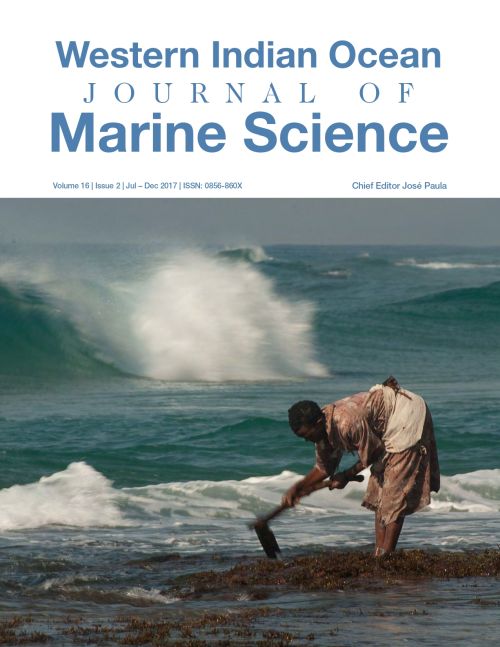Main Article Content
Long-term changes in seagrass coverage and potential links to climate-related factors: the case of Inhambane Bay, southern Mozambique
Abstract
Changes in seagrass coverage in Inhambane Bay (southern Mozambique) from 1992 to 2013 were assessed using SPOT 5 and Landsat imagery mapping methods with support of extensive groundtruthing. Over a 21-year period, the total seagrass area was reduced from 12,076 ha to 6,199 ha (51% of the original area). 2001 was the year when seagrass occupied the smallest area in Inhambane Bay with 5,641 ha, apparently related to the impacts of tropical Cyclone Eline with winds of around 200 km/h, and lasting for 29 days with widespread damage on human and natural infrastructure, However, a steady seagrass recovery was observed between 2001 and 2004, where 958 ha of seagrass was restored naturally. Eight seagrass species occur in Inhambane Bay forming six seagrass community types. The three largest communities were Thalassia hemprichii/Halodule uninervis with 2,305.5 ha, followed by Thalassodendron ciliatum/Cymodocea serrulata with 2,280.3 ha, and Halodule uninervis with 1,393.9 ha. The loss of seagrass occurred mainly in the T. hemprichii/H. uninervis and H. uninervis communities. A specific study on T. hemprichii conducted at Barra Peninsula and Ilha dos Porcos showed that the total seagrass biomass varied between 947.08 ± 31.09 g DWm-2 and 1636.82 ± 80.52 g DWm-2, respectively, being low at Barra Peninsula, where seagrass meadows have lower shoot density and appear to be more exposed to climate-related events such as cyclones compared to Ilha dos Porcos. This monitoring method creates a basis for better management and conservation, and a continuation of these types of evaluation actions to predict trends and impacts on marine habitats are recommended.






